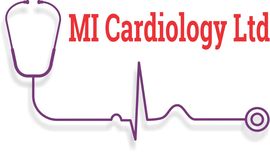Northland > Private Hospitals & Specialists >
Dr Raj Nandra - Specialist Physician
Private Service, Cardiology, Internal Medicine
CT Coronary Angiogram
The CT coronary angiogram procedure uses a powerful X-ray machine that produces images of your heart and its blood vessels. The procedure is minimally-invasive with the need for an injection only. It yields the same results as that of invasive coronary angiography.
In Northland DHB a 256 slice GE Revolution CT scanner is used which enables rapid scanning and minimal radiation dose. Image quality is excellent.
Why do I need this procedure?
A coronary CT angiogram (CTCA) is performed to check for obstruction of arteries in your heart (coronary artery disease) which increases the risk of heart attack.
In a CT angiogram procedure, an intravenous (IV) line is placed in your arm and dye injected via the IV line. X-ray images are taken of your heart. To get good images, ideally the heart rate is required be 60 beats per minutes or less and to achieve that might need medications (e.g. Metoprolol or Diltiazem or Ivabridine) to slow the heart.
For this procedure you can take your usual medication except the ones that affect blood pressure or kidney functions (our cardiac nurse will be in touch to discuss and advise regarding those medications). Avoid drinking alcohol or caffeine based drinks (coffee, tea, soft drinks). You are also asked to refrain from taking Cialis, Viagra or Levitra for 2 days before your procedure.
Please come to Whangārei Hospital Radiology Department and report to main reception. Our friendly cardiac nurse will take you into another private room and after obtaining consent for a CT scan and for contrast, will check your blood pressure and heart rate and potentially take an ECG reading.
You will be asked to change to a hospital gown. When ready, you will be taken to the CT Suite, placed on the table, have the ECG dots placed on your chest and given GTN spray under the tongue which helps the bloods vessels to open up so that injected dye is circulated well and makes the imaging of blood vessels better.
If the heart rate is still fast then IV beta blockers might be given to lower the heart rate, and blood pressure is monitored closely to make sure the procedure is done safely. If blood pressure is low and heart rate is fast then the procedure might be abandoned. Also if there is any contraindication to beta blockers, the procedure might be abandoned but the cardiac nurse will review all this information and discuss with the cardiologist before booking the appointment.
A CT technician will do the CT scan and will be in constant contact with you during the procedure. It is important to keep as still as possible. You will be asked to hold your breath. Any movement can blur the X-ray images.
After your CT angiogram is completed, the cardiologist will be able to discuss the formal report with you and the final report will be sent to you within 2 - 7 days once a radiologist reviews other aspects of the CT images like your lungs, gastrointestinal tract and skeletal system. After the procedure you can return to your normal daily activities. You should be able to drive yourself to work or home.


